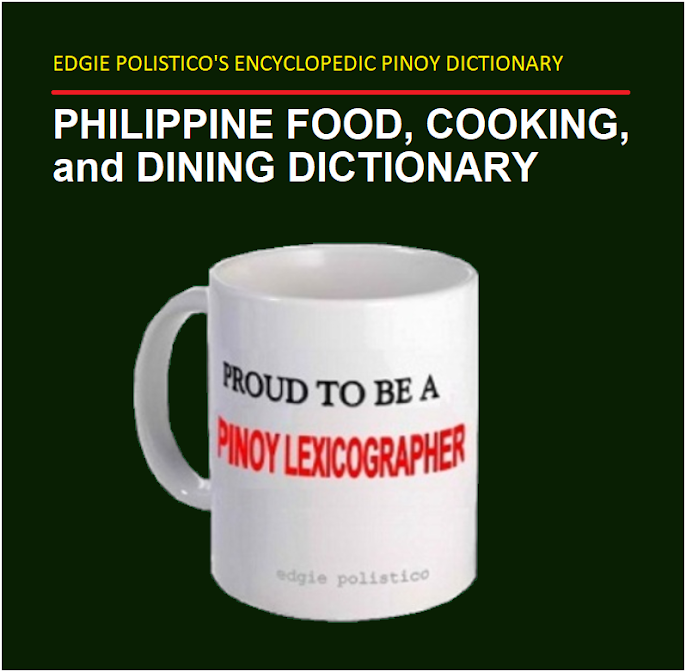.JPG)
penoy – /pé-noy/ Tagalog [Metro Manilan, Lagueño and Bulaqueño), Batangueño, Cebuano, Boholano, Waray, Ilonggo, Bicolano, Ilocano, Pangasinense, and Capampangan egg/delicacy; dw Tag. balut [wrap] + pino [fine] > Pinoy [Filipino] [n.] unfertilized duck egg.
Other local name:
- a.k.a. balut penoy in Tagalog
It is a duck egg that remains unfertilized after undergoing the incubation period.
The unfertilized duck egg has no yolk formation when screened through the candling process or that procedure where each egg is held against a lighted candle (old method) or electric bulb (modern method).
The unfertilized eggs are sorted out as the by-product in the production of balut sa puti and then kept warm in rice husk for several days before they are sold as a hardboiled eggs.
Instead of having a semi-fully developed chick, a penoy egg would only produce a mass of plain white and yellow embryos. Thus, when boiled, the white portion would solidify and the yellow mass would just coagulate.
There are two kinds of boiled balut penoy: the masabáw (soupy) and the tuyô (dry).
The masabaw is produced by keeping duck eggs in rice hay or incubating them for up to 12 to 13 days. When boiled, masabaw is not actually soupy but rather very moist, creamy, and a bit slimy that can be slurped readily after having sprinkled with a pinch of salt or doused with spiced-up vinegar.
When incubated further for a day or more, the penoy egg would become tuyô or quite dry and appear to be like an ordinary boiled chicken egg only that the white and yellow parts of the embryo are not holding any regular shape, sometimes it appears semi-scrambled.
To easily distinguish masabaw from tuyo, vendors would put a distinguishing mark on the shell of balut penoy. For the masabaw, a straight vertical line is drawn around the shell, or sometimes the letter “S” is written for sabaw (soup) or “M” for masabaw (soupy). A crosswise or spherical line is drawn around the egg to indicate that balut penoy is tuyô.
A douse of vinegar and a sprinkle of salt are the usual condiments used when eating balut penoy.
Due to the limited supply of duck eggs, commercially produced brown chicken eggs are now fast becoming a substitute for making balut penoy which is called penoy itlog manok or pinoy in Visayas.
However, there are mischievous balut penoy makers who would pass on the white chicken eggs as brown chicken eggs by putting light brown artificial coloring on the shells of white chicken eggs, such as dipping them in coffee
 |
Photo shows balut penoy sold on the stall of a sidewalk vendor under the viaduct in Alabang, Mutinlupa City. The eggs with no markings are balut sa puti. Shown also in the photo is a bottle of spiced vinegar and container that holds grains of salt. Vinegar and salt are the usual condiments used when eating balut |
Opinions as to whether or not penoy is Haram (forbidden) in Islamic law differ from various schools of thought.
It is unclear if this unfertilized egg is just similar to a fresh chicken egg that can be taken as food.
There are those who would say that considering the chick and its blood is not yet formed in the egg, penoy can be taken as food because only those animals that are not killed without slaughtering and their blood are considered Haram.
To be safe, it is advisable to ask first if the person to whom the penoy egg would be served would accept it gladly.
See Index of Entries here
It is unclear if this unfertilized egg is just similar to a fresh chicken egg that can be taken as food.
There are those who would say that considering the chick and its blood is not yet formed in the egg, penoy can be taken as food because only those animals that are not killed without slaughtering and their blood are considered Haram.
To be safe, it is advisable to ask first if the person to whom the penoy egg would be served would accept it gladly.
See Index of Entries here
Related posts:

.JPG)
.JPG)
.JPG)











